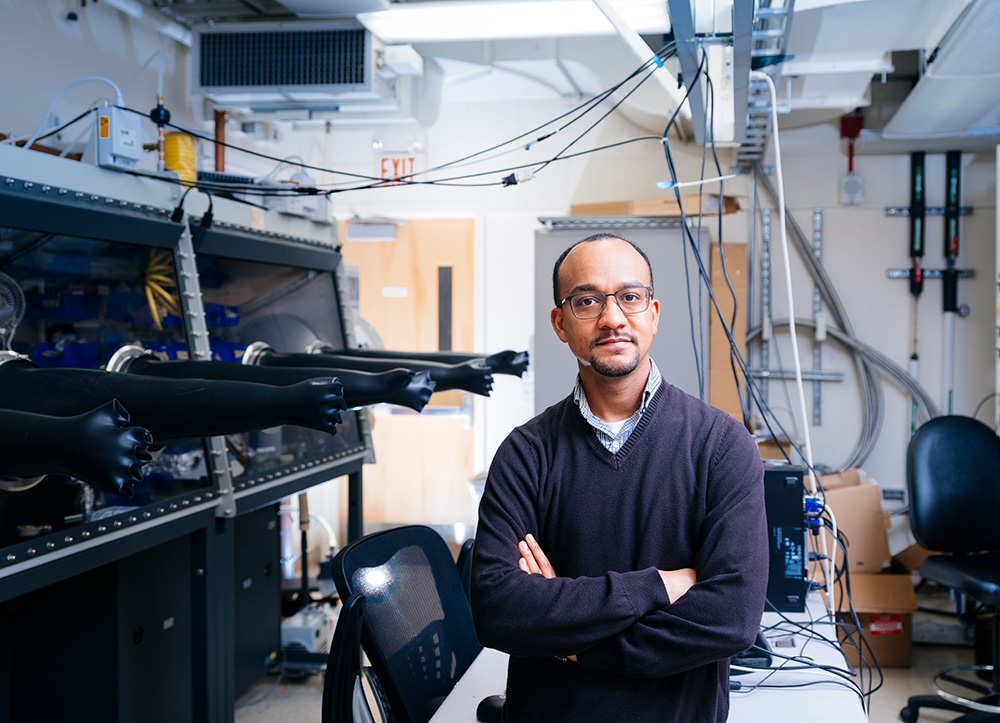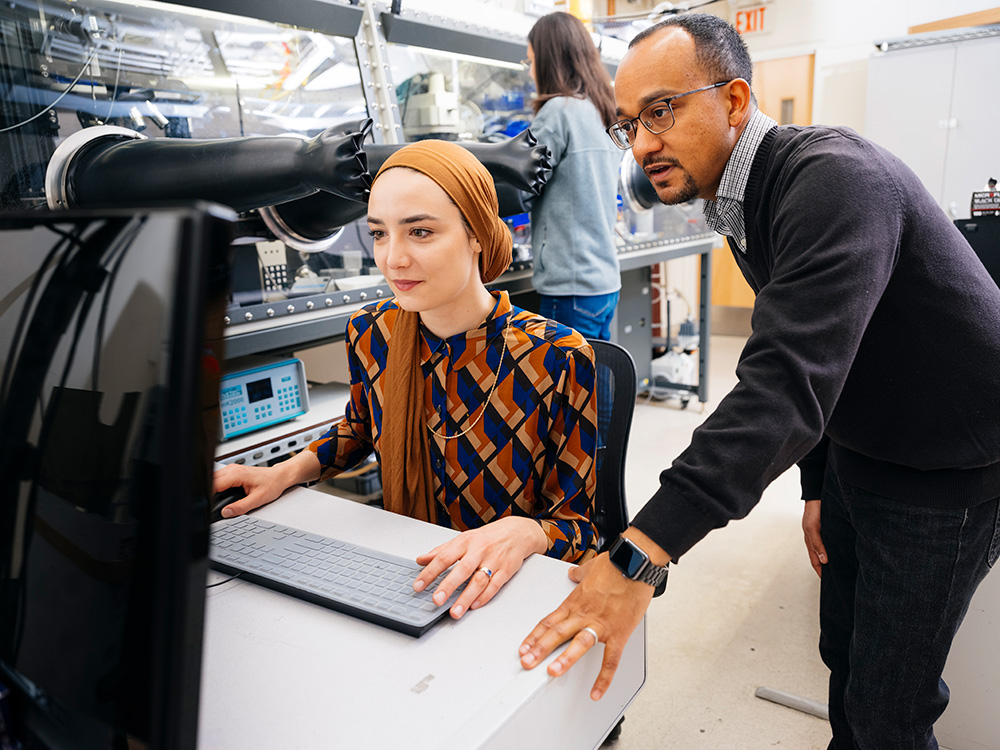The Chemistry of Energy Efficient Electronics
Kwabena Bediako, a 2023 Heising-Simons Faculty Fellow, is using his expertise in chemistry and physics to design new magnetic and electronic crystals and new ways of storing energy from renewable sources.

Kwabena Bediako grew up in Ghana, not far from a hydroelectric dam across the Volta River, which provided electricity for the area. But as he learned about renewable energy, he wondered why the country didn’t rely more on solar power. Afterall, most days in Ghana were sunny.
As Bediako launched his career in chemistry, this question helped shape his research interests.
“I realized that much of the challenge wasn’t in harnessing the energy, but in storing it,” says Bediako. “If I could figure out how to store energy more efficiently, it would be really transformative to the renewable energy field.”
As a professor in chemistry at Berkeley, he still focuses on energy efficiency, although his interests now include not only energy storage, but also the development of more energy-efficient electronic devices. With a 2023 Heising-Simons Faculty Fellows award, he is probing how extremely thin crystals can be arranged to control the electronic properties of the materials they compose — and, ultimately, be used to build energy efficient devices.
“Even if we can harness more energy from the sun or wind, we still face the problem of escalating energy demand because of all our consumer electronics,” he says. “My lab focuses on some of the basic science challenges that need to be addressed to create more efficient electronics and lower this energy demand.”
Bediako got his first taste of lab work after moving to the United States to attend Calvin College in Michigan. There, he studied the self-assembly of molecules and how energy is stored in molecular bonds.
In graduate school — first at the Massachusetts Institute of Technology and then, when his mentor’s lab moved, at Harvard University— Bediako began to design some key components of a sort of artificial leaf. The concept was inspired by the chemical reactions that plants use to store energy from the sun. If he could make these reactions more efficient, Bediako imagined, he could create fuel cells to store solar or wind energy for human use.
“This work all continued to be motivated by my interest in thinking about renewable energy,” says Bediako.
Much of the research revolved around how to move electrons between materials; the movements of these charged particles are at the heart of electricity and energy storage. To innovate in this area, Bediako wanted to better understand the physics of the materials he was studying — it wasn’t just the chemical properties of the materials that contributed to how the electrons moved, but also the physical properties. To expand on this research, he joined a physics lab focused on extremely thin materials that exhibit unusual physical properties.
“It was quite a steep learning curve at first,” says Bediako about his transition from chemistry to physics. “It’s like going to a new country and being immersed in a new language. You feel like the dumbest person in the room for a while, but that’s also where you have the most opportunity to grow.”
Armed with his expertise in both chemistry and physics, Bediako launched his Berkeley lab in 2018 with the goal of developing and studying materials that can store and conduct electricity in new, more efficient ways than today’s electronics. He’s particularly interested in stacked, thin layers of carbon and other inorganic crystals called moiré lattices. The lattices are made of layers of material that are arranged slightly askew to each other — imagine stacking two pieces of grid-covered graph paper but rotating one just a few degrees so its squares don’t quite line up with those below it.
“When you twist these layers to different angles, we already knew that the material takes on very different physical properties. But what we discovered was that we can use this to modify its electrochemical properties as well,” explains Bediako. “We can use these different properties to actually control how the transfer of electrons happens.”

For practical applications, this means a material made of moiré lattices might be able to be used in an ultra-efficient fuel cell or electrolyzer in the future.
Bediako’s lab has developed an imaging method that lets them visualize, at a minuscule scale, exactly what happens to the layers of a moiré lattice when they’re stacked — understanding how the layers shift and bend slightly to accommodate each other is important to optimizing the materials even more.
With his Heising-Simons Faculty Fellows funding, Bediako is probing how his twisted moiré lattice materials can store energy in different ways depending on their exact configuration.
“We’ve studying very fundamental questions but my hope is that, down the line, these can lead to breakthroughs in energy more broadly, whether that means energy conversion and storage or low-power electronic devices,” says Bediako.
